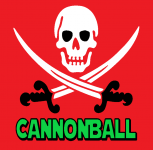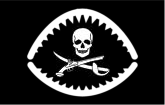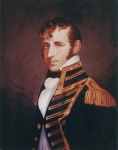-
 The War of Jenkins' Ear
The War of Jenkins' Ear
Part 1
Historical context
After War of the Spanish Succession (1701–1714) the new blood line of the Borbones enter in the Madrid’s court, replacing the Hausburgo, that ruled since Charles I of Spain and V of Germany. In the treaties of Utrecht (1713) and Rastatt (1714) the Spanish crown lost most of their European possessions including Gibraltar a land given to the United Kingdom in perpetuity under the terms of the 1713 Treaty of Utrecht. They also gave a lot of concessions to both sides in order to keep the continental peace. This was a long civil war that destroyed and divided country (many of the costs where paid by regions that fought for the Hausburgo that also lost most of their privileges).
This is quite important in order to explain the Anlgo Spanish War (1727–29) where the Spaniards siege Gibraltar. But in many books you’re going to find the start of the war in 1726, because some historians think as the siege of Porto Bello as the beginning of the war and not what originated it. Both actions failed and the peace was signed as the Treaty of Seville (1729). Which included clause a prevents the British ships to trade in Caribbean Spanish ports and gives the Spaniards derecho de asiento, the right to see the ship cargo in every British Ship in the Spanish Caribbean.
Two years later, in 1731 the British brig Rebecca was boarded by the Spanish patrol boat La Isabela, commanded by Julio León Fandiño. After boarding (using derecho de asiento), Fandiño cut off the left ear of the Rebecca's captain, Robert Jenkins, whom he accused of smuggling and piracy. Fandiño told Jenkins, according to his testimony "Go, and tell your King that I will do the same, if he dares to do the same." Depending the author that you read, could be an abuse of authority from Fardiño (not unusual that days) or could be true that Jenkins was a smuggler(also not uncommon) . Other investigators suggest that the main mission of Jenkins was to start a war provoking Spanish ships. However, as everyone knows, there aren’t reliable sources of that age. Being the first serious investigation from 1880, a century and a half after the incident.
One important detail is that the scarcity of all kind of products in the Spanish colonies was a huge opportunity to smugglers. Needless to say that also was the golden age of piracy.
In March 1738, Jenkins was ordered to testify before Parliament, presumably to repeat his story before a committee of the House of Commons. The incident was considered alongside various other cases of "Spanish Depredations upon the British Subjects" and was perceived as an insult to the honor of the nation and a clear casus belli. But, why they waited 7 years after the incident? Because during the War of Polish Succession (1733–1738) both countries were allies, and for a few years, they had better diplomatic relations.
And in chapter 2 how the war beguines.
I hope you enjoyed it.
-

Looking forward to reading your thoughts. Thanks for the post.
-

Thank you Alberto that was an informative start. Looking forward to more.
-

Part 2
For more than one year after Jenkins’ testimony, there was a lot of diplomatic activity. The English tried to annul the Derecho de asiento or add aditionals cargos in order to trade with Spanish Latin American but the Spaniards said that the only way to do that was the return of Gibraltar. As you can imagine these negotiations were in a road to a dead end. During this period the British Empire armed a large fleet and uncompressible, the Spanish crown didn’t update all their defenses.
So the 10 July 1739, the British King George II authorized the Admiralty Board to seek maritime reprisals against Spanish ships and possessions. The leader of this fleet was Vice Admiral Edward Vernon that departure from Britain the 20 of July, arriving to Antigua on early October and sending Thomas Waterhouse with three battleships to stop the trade between La Guaira and Portobelo. After been discovered by small ships, Waterhouse decided to attack the port with an easy butt effective plan, to fly the Spanish flag to enter the port, and hoping to not lose the surprise factor, engaging battle the 22 of October. However, the governor of the area, Brigadier Don Gabriel José de Zuloaga, prepared a plan against an invasion after the Anglo Spanish war. So when Waterhouse enter in the port, the forces commanded by Captain Don Francisco Saucedo, have orders to wait until the ships were in reach of the canons and concentrate fire. So after a three hour battle, the British retreated to Jamaica to repair their ships. Waterhouse declared that the human cost to take a few Spanish vessels was unjustified.
The war was declared by the British the 23 of October, the day after the attack.
-

Great summary of the events, thanks Alberto
-

Interesting. Thank you for joining Anchorage Alberto. Your perspective is refreshing. 
-

Part 3
The Battle of Porto Bello
As I said before, many Spanish Strongholds didn’t update their defenses, even worst, they have the same plans used in the previous war. This is important in order to explain why Vermont decided to attack the port with only six ships the 20 November 1739. Something that made Vermont looks insane in the royal navy.
On the Spanish side there were only 4 coast guard ships and the administrator Francisco Javier de la Vega didn’t even bother to place all the canons in their places. Defended only with three forts Todofierro (All iron in Spanish) near the port, and inside by the Gloria and San Jerónimo. There weren’t coordinated and there were only 700 men in total to defend one of the most important trade ports. And they knew about the war. An anecdote, the commander of the ships was Francisco de Abarca, a future member of the Spanish inquisition.
Back to 20 November 1739. The British ships entered the bay prepared for a general attack, but a wind coming from the east obliged Vernon to concentrate his ships on the Todofierro The Spanish garrison was caught unprepared. With half of the men outside the fortress and several of them unarmed, when they saw the British scaling the wall, many surrendered at sight, or offered a minimum resistance, only remained 40 soldiers after the first minutes of the battle. Gloria’s cannons were out of reach and San Jerónimo’s were disassembled.
After only two hours and only being attacked by Vermont, and without more resistance, the administrator de la Vega surrender the place. The British were surprised how easy this action was, losing only three men, and 7 wounded.
In the naval aspect there is little to say, one sloop sunk and 3 vessels captured.
The British occupied the town for three weeks, destroying the fortress and other key buildings and ending the settlement's main function as a major Spanish maritime base, before withdrawing. Some historians said that Vermont was upset for not founding any gold and that is why the destruction was so systematic. Others said maybe was revenge for La Guaira and to make example for other Spanish forts.
Vermont understood that speed and maneuvers were more important than fire power. And fast actions in order to reduce the diseases. Also he must have the credit that he deserves for this action.
The recently created United Kingdom needs a huge victory, and they had it in the Battle of Porto Bello. To understand how important this was, a street in London and a district in Edinburgh where named after the Battle. Vermont was promoted to admiral, and at a dinner in honour of Vernon in London, the song "Rule Britannia" was performed in public for the first time.
-

Thanks for posting these Alberto!!!
-


Originally Posted by
Blas de Lezo

Derecho de asiento
Translation, please?
-


Originally Posted by
csadn

Translation, please?
A treaty or peace agreement by which a group of merchants received the monopoly over a trade route or product .
An example of international agreement was the "seat of Negros", a monopoly on slave hunting Africa and Spanish America and who gave England the end of the War of Spanish Succession ( 1713 ) as compensation for the victory of the French candidate Philip V of Spain . With this treaty was fixed that year, England had the right to trade with 4800 slaves black, and all this, for a period of thirty years.
In many cases of intra form a seat as funding in the case of economies of scale as a result was one company insider (the Italian Compagnia), which was a commercial company whose activities enjoyed the protection of the State by a privilege particular that though not always conformed a total monopoly, did establish in mostly a natural monopoly in the hands of the State . Its existence dates back to the fourteenth century in Italy , highlighting the British Company of the East Indies , the Dutch Company of the West Indies or India House of Trade in Seville .
-

Sorry, my bad, I forgot to write it down while I was researching. Bobby is clompletely right about what derecho de asiento means and comes from.
Asiento is in Spanish seat, but is from asiento contable, accounting entry. But down the road the translation was established.
Last edited by Blas de Lezo; 04-24-2013 at 15:07.
-

Part 4
Siege of St. Augustine
In 1739, Spain and United Kingdom have a colonial frontier between Florida and Georgia Florida was a prosper colony, thanks to the strategic localization near Cuba (considered the heart of the Spanish power in that era) that made the trade and protection easier. On the other side Georgia was a young (1733) and not very populated colony.
It is important to understand certain points, the European colonialist didn’t recognize the original habitants and their frontiers, even if the signed pacts with some thrives, if a land hadn´t white colonials, it was considered uninhabited. So there were some conflicts for lands like Savannah where neither country had a settlement.
There was an earlier siege of St. Augustine during Queen Anne's War in 1702, when the English came from Carolina and failed in an attempt to move the frontiers. In 1727 a second siege was done by the Coronel John Palmer with the same results, giving the colonial fortress of Castillo de San Marcos, the status of unassailable.
In 1737 Manuel de Montiano y Luyando took possession of the Florida government. He was afraid of an English attack, so he prepared the colony for an invasion, gathering supplies from Cuba and establishing Fort Gracia Real de Santa Teresa de Mose, a fortified city fulfilled with the African slaves whom escaped from the British Colonies, these were known as Liberos, and freedom and citizenship was granted in exchange of serving the militia and converse to the Catholic faith (you couldn´t have any other religion in Spain under death penalty) This also was the free black settlement in America.
The Governor James Oglethorpe of the colony of Georgia, knowing that was in a disadvantage, decided to attack St. Augustine to prevent a possible invasion, gathering as much men as he can, trying to sign pacts of neutrality with the natives, every Seminole tribe on the British side signed except the Ocomíes that hate so much the Spaniards that joined the British forces, giving 1200 men to the 1000 army recruited by Oglethorpe. So in May of 1740 he marched against St. Augustine.
In his way he captured the Spanish outposts of Fort San Diego, Fort Pupo, Fort Picolata and Fort Mose with the minimum resistance because Montiano gave the order to retract to San Marcos, where the Englishmen arrived the 13 of June of 1740 and began the siege by blockading the city including the Matanzas Inlet. So the Spaniards inhabitants took shelter in the castle. On June 24, Oglethorpe began a 27 day bombardment. But it was quite ineffective, because the canons were at Matanzas inlet and it was the limit of their range so they did little damage to the fort’s walls. But Oglethorpe hoped that a sustained bombardment and blockade would cause Montiano to surrender the city and fortress. When asked for surrender, Montiano answered: "I will have the pleasure to meet you inside the castle..."
While the Oglethorp expedition laid siege, Montiano considered his options. Knowledgeable of the strategic importance of Fort Mose, and realizing the vulnerabilities it presented to the British siege, if recaptured, Montiano decided to undertake the counter-offensive operation. At dawn on June 15, Captain Antonio Salgado commanded Spanish regulars and Liberos, and the Seminole band led by Francisco Menendez and Indian auxiliaries in a surprise attack on Mose. The attack was initiated two hours before the British soldiers awoke so that they could not prepare their arms for defense. About 70 of them were killed in bloody hand to hand combat with swords, muskets and club work, and only 10 casualties on the Spanish side. The Coronel John Palmer died during the siege, a great hit to the British morale.
The siege lasted 38 days until Oglethorpe ordered to withdraw because he was afraid of the Spanish reinforcements that could come from Cuba. The Key of the failure of this siege was that the royal navy was unable to block the small Spanish vessels that deployed food and weapons through the Mosquito inlet from the Habana and the fell of fort Mose.
-

Excellent commentary continues thanks Alberto
-

Part 5
Let’s back a Little earlier, after the fall of Porto Bello, Vernon knew he had to strike were the Spanish Crown was more vulnerable. The constant need of Indian’s gold (el oro de las indias in Spanish) The state was almost in constant bankruptcy for several reasons. The constant wars dry the treasure, the lack of investment in the country made Spain unproductive so they had to import everything and the neglected administration and corruption made that half of the gold was spent before it arrived. So if they managed to cut the gold supply in a few months the Spaniards would capitulate in a few months.
One of this strategic points was Cartagena de Indias, in the actual Colombia, where went all the gold and silver from Peru and the Viceroy of New Granada. The city faces the Caribbean to the west, to the south its bay has two entrances: Boca Grande (Big Mouth) and Boca Chica (Little Mouth) being the last one the only deep water entrance, it was called Little because only one ship can enter at a time.
With these in mind, the idea of conquering Cartagena de Indias was in Vermont´s mind since the beginning. The first plan was to gather information from First Lieutenant Percival sent to the city with a letter to Blas de Lezo and the governor of Cartagena. But they denied the entrance to the port. The second recon mission was more direct. On March 7, 1740, Vermont left Port Royal in command of a squadron including ships of the line, two fire ships, three bomb vessels, and transport ships with 400 soldiers inside. The main idea was to provoke an attack and be able to estimate the Spanish forces inside.
The first action Vermont took after the arrival on March 13, was to land some men to topography and to reconnoiter. After 5 days without a Spanish reaction, ordered to open fire. But Blas the Lezo understood Vermont’s true intentions, so he ordered to remove the canons from some ships in order to form a shore battery.
Vermont then try an amphibious assault, and then was when Blas de Lezo ordered to open fire, and the 400 men had to go on ship again. After that and in order to weak the Spanish morale, Vermont ordered a three day naval bombardment of the city. After a 21 day campaign, Vermont sailed to Jamaica leaving the HMS Windsor Castle and HMS Greenwich in the vicinity, with a mission to intercept and capture any Spanish ship that may approach.
Last edited by Blas de Lezo; 04-25-2013 at 09:45.
-

Part 6
Blas de Lezo
Let me introduce a man who has a main role in this war, and a (sadly) forgotten legend of the Spanish fleet, Blas de Lezo y Olavarrieta. I mentioned him before but I want to explain his live. As you can see in my avatar, I admire a lot this sailor.
He was born in Pasajes, in Guipúzcua a province of the Vasque country, Spain. He came from a linage of notorious sailors. His town was almost in exclusive dedicated to the sea. He went to the scool in France and in 1701 joined the French navy as an Officer cadet or Midshipman (Guardamarina is the rank in Spanish) under the command of the Count of Toulouse, Luis Alejandro of Bourbon, Son of Luis XIV of France. At this Point it was the Spanish succession war and France was an Ally of the Bourbon candidate.
He took part in the biggest naval battle of the conflict, the Battle of Vélez-Málaga, 50 warships 6 frigates a total of 3,577 guns and 24,275 menFrench fleet and a 53 ships of the line 6 frigates, 7 fireships, 28 galleys a total of 3,614 guns and 22,543 men. During this battle he received a cannon shot and lost his left leg, earning the nickname of “Patapalo” ( Pegleg) The legend said that during the amputation he didn’t make a noise. He impressed so much for his determination during the battle that get promoted to Ensign by the king Luis XIV of France, and offered him to enter in the court of Felipe V of Spain.
For several years he served in various ships, participating in several actions as the supply to Peñiscola and Palermo or the assault to the British ship Resolution, a 70 cannon ship that was burned as a result, but he captured other 2 ships, and was rewarded with the honor to drive the ship to his born place. After this action, he rejected to be in the court because he ambitioned to be an admiral.
Blas de Lezo rest for a few months and in 1705 he came back to the fleet and supplied Peñiscola for a second time.
In 1707 Lezo participates in the Battle of Toulon, and fought against the troops of Victor Amadeus II of Savoy a in which he lost the sight in his left eye as a result of an impact with a burning splinter. So he has to go to the Rochefort port to recover, where he was promoted to Lieutenant of the Coastguard.
In 1712 he served under the command of the Admiral Andrés de Pes, and he was so impress that wrote several recommendation latters and made him Captain only one year later.
In 1714 Lezo lost the mobility of his right hand when he was shot during the supply Barcelona that was under siege heavy siege. Because he was heavily outnumbered, he decided to leave burning wet thatch to made a smoke curtain and be able to avoid the cannon’s fire.
Is during this last period of the Spanish succession war when he had chasen several British ships across the Mediterranean sea, he was named for the first time as El azote del inglés (Is quite difficult to translate, but more or less it means the Englishmen bane or the Englishmen scourge) because he managed to capture several ships, including the Stanhope.
At the conclusion of the War of Spanish Succession he was entrusted with the command of the flagship Lanfranco with the order to escort the gold from Cuba to Cadiz, and after the return to Cadiz, the ship was retired because I was damaged beyond reparations.
In 1720 the Crown gave him a new flagship with the same name Lanfranco also knew as León Lanfranco, and with it the control and generalship of the South Seas Fleet on February 16, 1723. He destroyed and drove out British and Dutch pirates from the Pacific coasts of the Americas, and captured twelve ships during this period.
He was married in Lima, Peru in 1725 with Josefa Pacheco.
In 1730 he returned to Spain and was promoted to chief of the Mediterranean Fleet; with this force he went to the Republic of Genoa to enforce the payment of two million pesos owed to Spain that had been retained in the Bank of San Jorge. Deeming the honor of the Spanish flag to be at stake, Blas de Lezo menaced the city with bombardment, he did that by showing a clock to the genoan negotiator and gave him a deadline, it was quite effective and the gold was used in the conquest of Oran.
In 1731, in recognition of all of his actions, the king Felipe V gave him a coat to arms and the right to use it on all the ships under his command (this right was knew in Spanish as bandera de comandancia)
In 1732, on board the Santiago, he and José Carrillo de Albornoz commanded an expedition to Oran and Mers-el-Kébir with 54 ships and 30,000 men. In the Battle of Aïn-el-Turk they recaptured the cities lost to the Ottoman Empire in 1708. After the defeat, Bey Abu l-Hasan Ali I managed to reunite his troops and surrounded the city of Oran. Lezo returned to its aid with six ships and 5,000 men and managed to drive off the Algerian pirate after a hard fight. Dissatisfied with this he took his 60-gun flagship into the corsair's refuge of Mostaganem Bay, a bastion defended by two forts and 4,000 Moors. He inflicted heavy damage on the forts and town. In the following months he established a naval blockade, preventing the Algerians from receiving reinforcements from Istanbul, gaining valuable time for the securing of Oran's defense, until an epidemic forced him to return to Cadiz.
In 1734, when his health was good enough, the king promoted him to Lieutenant General of the Navy. He returned to the Americas with the ships Fuerte and Conquistador in 1737 as General Commander of Cartagena de Indias, what leaves us in the events of the Jenkins’ Ear war
Last edited by Blas de Lezo; 05-09-2013 at 08:23.
-

Part 7
The Destruction of the fortress of San Lorenzo el Real Chagres
Is important to understand how the Colonial Spain was distributed in the Caribbean area, as in the modern USA, the main core of the population was in the coast, with fewer population in the trade post and mines inside the land. So if you destroyed the biggest ports and the strategy ones, many of the Colonies were going to be forced to surrender.
As I said before, one of the most incomprehensibly was the lack of prevision from the Spaniard, leaving strategy ports with a few protections. In the case of the fortress of San Lorenzo el Real Chagres and was armed with only four guns and about thirty soldiers under Captain of Infantry Don Juan Carlos Gutiérrez Cevallos, and was the last Spanish stronghold in the area after the destruction of Portobelo (it was near to it) and even worst, was the base of the guard coasts. So if the base falls, Vermont would have freedom of movement. But with all those factors, they decided to leave the defense as it was on peaceful times.
At 3 pm on March 22, 1740, the English squadron, composed of the ships Stafford, Norwich, Falmouth and Princess Louisa, the frigate Diamond, the bomb vessels Alderney, Terrible, and Cumberland, the fireships Success and Eleanor, and transports Goodly and Pompey, under command of Vernon, began to bombard the Spanish fortress. Given the overwhelming superiority of the British forces, Captain Cevallos surrendered the fort on March 24, after resisting for two days and realizing that there weren’t reinforcements to come..
Following the strategy previously applied at Portobelo, the British destroyed the fort, and seized the guns along with two Spanish patrol boats to reunite the forces in Portobelo itself.
With the recent turn of the war, the Spanish Crown decided to change the governor of Cartagena de Indias, the Lieutenant General of the Royal Armies Sebastián de Eslava y Lazaga, replacing Don Pedro Hidalgo, in order to add a military vision to the civil government. He became the Viceroy of new Granada.
In many texts, even in this, the title governor is misused, the correct title is Viceroy, they had the power of the king itself for that land, so there was little they couldn’t do, but it wasn’t a heritage title, it was designated by the crown and only a few nobles were over them (the house of Alba, of course)
Back to the new Viceroy, he had to travel to his new domains, so starting from the Galician port of Ferrol, the vessels Galicia and San Carlos set out on the journey. Hearing the news, Vernon immediately sent four ships to intercept the Spanish. They were, however, unsuccessful in their mission. The Spanish managed to circumvent the British interceptors and entered the port of Cartagena on April 21, 1740, landing there with the new governor and several hundred veterans from a Tercio Viejo (the old third, because they were a third of a regular army ) the elite soldiers from the Spanish crown.
-

Great recounting of this history Alberto keep it up.
-

Alberto, this is wonderful info.
For those of you knowledgeable about setting up threads, is there a way that Alberto's subsequent Part postings can be grouped together at the beginning of the thread? It would be a shame for any of these to be lost amidst the discussions.
-

Once again your knowledge enriches us and your presence on this site beneficial to us all. Thank you for posting these interesting historical events Alberto.
-

Nice to see some detailed history for the Spanish. We often have an abundance of information on France and Britain, with a healthy dose on the United States, but never enough on Spain.
-

Part 8
Second attack on Cartagena de Indias
The 3 of May 1740, Vernon returned to Cartagena de Indias in charge of 13 warships, with the intention of bombarding the city. Lezo reacted by deploying his six ships of the line so that the British fleet was forced into ranges where they could only make short or long shots that were of little value. Vernon withdrew, not before firing at least 300 bombs, he asserted that the attack was merely a manoeuver.
This attack helped Blas de Lezo to not only test their defenses; he also studied the strategy used. And also did Vermont, who decided to gather the biggest fleet possible, so he had to repair all his Ships and ask to reinforcements.
For almost a year, It wasn’t a remarkable battle. But in September of 1740 is when Anson began his voyage around the globe, but I will talk about him later.
-

Look forward to hearing about Anson's journey around the globe. 
 Posting Permissions
Posting Permissions
- You may not post new threads
- You may not post replies
- You may not post attachments
- You may not edit your posts
-
Forum Rules







 Reply With Quote
Reply With Quote














Bookmarks